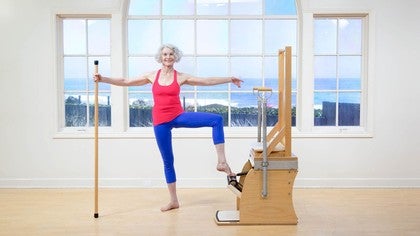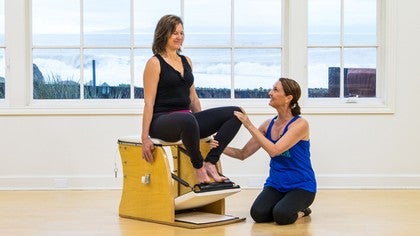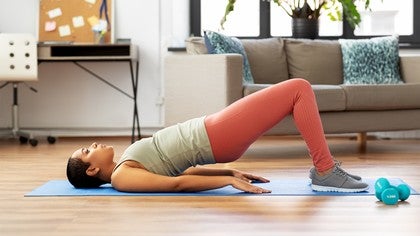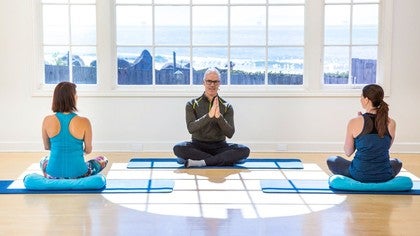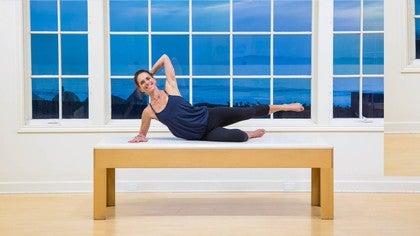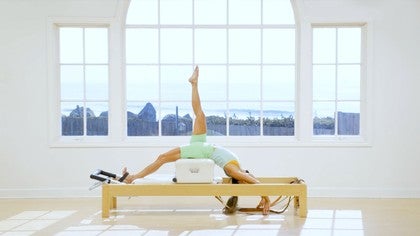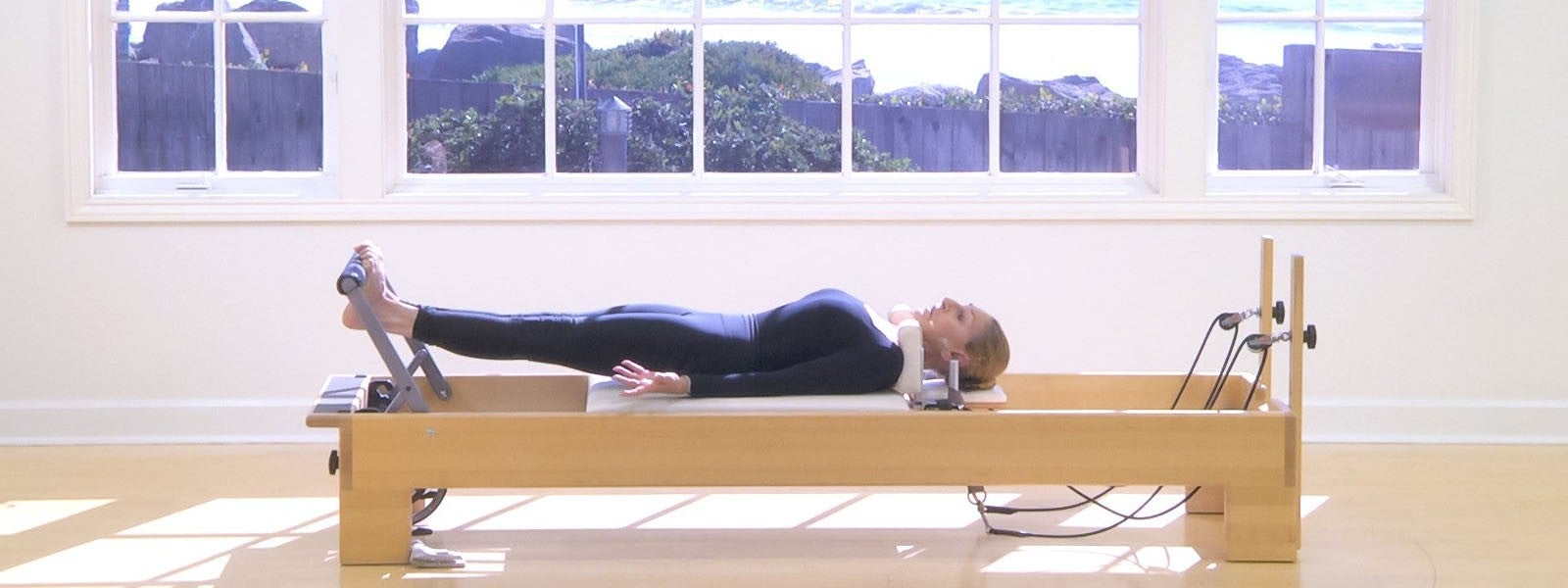
Foot Fitness: How Pilates Instructors Keep a Spring in Their Step
Despite their important role in keeping us upright, many of us don’t tend to our feet until there’s a problem. In addition to the usual foot issues including plantar fasciitis and bunions, Calhoun points out that as we age, our feet tend to lose mobility. This inflexibility and stiffness contributes to the shuffling gait (think of trying to walk in shoes that are way too big for you) that is associated with increased risk of falls.
START AT THE BOTTOM
What’s the antidote? Moving, stretching, and exercising your feet! Joseph Pilates understood the importance of working all parts of the feet. On the Reformer, the Footwork series of Toes, Heels, and Arches as well as Tendon Stretch and Running are full-body exercises that also work and stimulate the soles of the feet. He also invented a pair of specialized apparatuses, the Foot Corrector and the Toe Corrector, to tone and strengthen the feet.
“In Pilates, the Footbar of the Reformer is your floor,” explains Pilates instructor Ruth Alpert of Santa Barbara, California, who is also trained in Flatfoot dancing, a traditional, percussive Appalachian dance form.
The actions of curling the toes around the Footbar, massaging the bottom of the midfoot, and curling the toes back towards the shins (dorsiflexion) make Footwork an ideal way to get a feel for the 33 joints, 26 bones and 107 ligaments in the feet.
USE IT OR LOSE IT
“Having a ‘spring in our step’ is a very functional description of what we’re supposed to be able to do,” says Pilates instructor Niedra Gabriel of Ojai, California. “We spend our time walking on flat surfaces, in shoes, but we’re designed to walk on uneven terrain and constantly catch our balance,” she adds. Think about how it feels to hike on a trail or walk on sand. In both instances, you’re constantly responding to the changes underfoot, giving your feet and ankles a workout.
“The foot has three arches and we want all of them to be lifted and springlike,” says Gabriel. In addition to the two arches that run vertically from the base of the heels to the metatarsals (one on each side of the foot), there’s the transverse arch that spans the metatarsal horizontally.
AT-HOME FOOT FIXES
To fix your feet, or to keep them in tip-top shape, try these simple foot-care practices recommended by Pilates Anytime instructors. Your feet will thank you.
- ROLL Gabriel is a proponent of rolling out the feet. Even a few minutes a day can help keep the feet “springy.” To start, stand near a wall, a windowsill or a sturdy chair for support because you’ll be balancing on one leg. You can use a Yoga Tune-Up ball, a tennis ball, or a Franklin Method ball. Place the ball underneath one foot and explore all of the ways you can fan your foot across the surface. Roll the ball back and forth from the top of the bottom of the foot, from side to side, and fan the toes across the top of the ball. You can also run the sole of the foot back and forth over a rolling pin or a foam roller.
- SCRUNCH New York City-based Pilates instructor and founder of FEET-NESS™ Ilaria Cavagna uses a towel to improve foot dexterity and articulation. Sit on a Mat with the legs bent and the feet off the mat and resting on a hand towel or washcloth (this exercise will only work on a non-carpeted floor). Use your toes to pull the towel towards you and then push it away. It’s harder than it sounds! It’s helpful at first to mimic the scrunching motion with your fingers as you work the feet. Don’t be surprised if your feet become bright red as you perform the exercise. According to Cavagna, it’s a sign of improved blood circulation in your feet. You may also notice that the veins of the feet become less pronounced after doing this work. Similar: try to pick up a pencil from the floor using only your toes.
- STRETCH According to Alpert, we tend to focus on stretching the Achilles tendon, but the top of the foot, known as the instep, is often neglected. That’s a mistake because we spend so much time pressing on the gas pedal in our cars, in a position Alpert calls “Barbie Foot” after the iconic doll. Another foot stressor is wearing flip-flops (a pet peeve of podiatrists) that don’t let the muscles of the feet release. To stretch the instep, stand at a wall or beside a stationary piece of furniture for balance. Lift one foot off the floor, point the foot, and rest the top of the foot (the toenail-side) on the floor. You may need to bend the knee of the supporting leg quite a bit. Gently press the instep towards the floor, feeling a nice stretch and release at the top of the foot where the foot and ankle meet. Less is more here, so don’t overdo it. Then try the other foot.
- SELF-MASSAGE Don’t underestimate the benefits of touch. Pilates instructor Debora Kolwey recommends that her older clients do a little bit each day. From a seated position, place one ankle across the opposite knee and use your hand to grasp and rotate the foot in both directions. Be gentle and notice any sticky spots. Then spend some time exploring the ways you can stretch, massage, and awaken the feet using your hands. You can pull the toes back towards the shins or away from one another, slide your fingers between the toes to fan them out, use your knuckles to roll out the bottoms of the feet, and use your thumbs to apply pressure to the different regions of your feet. No equipment necessary!
Do you make time for your feet in your Pilates practice or in daily life? Let us know your favorite foot fixes in the comments below.
Comments
You need to be a subscriber to post a comment.
Please Log In or Create an Account to start your free trial.


